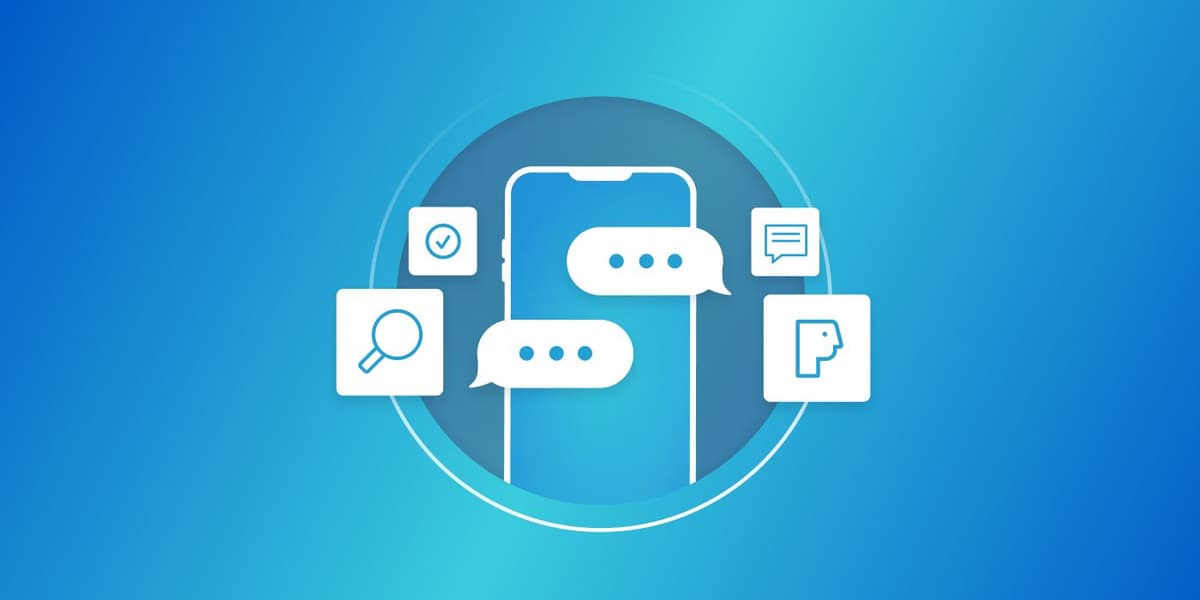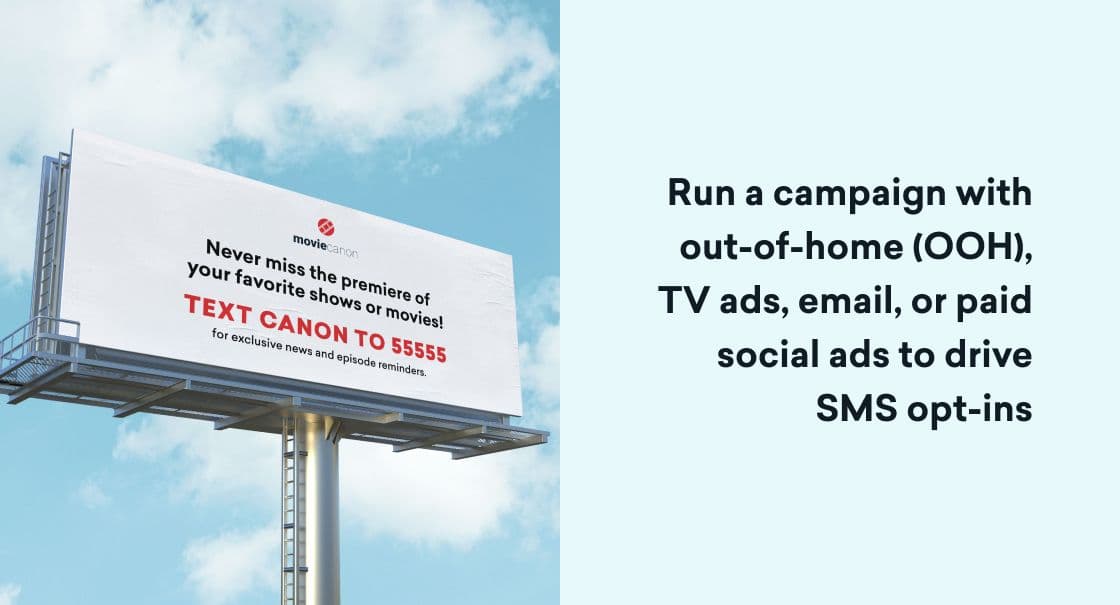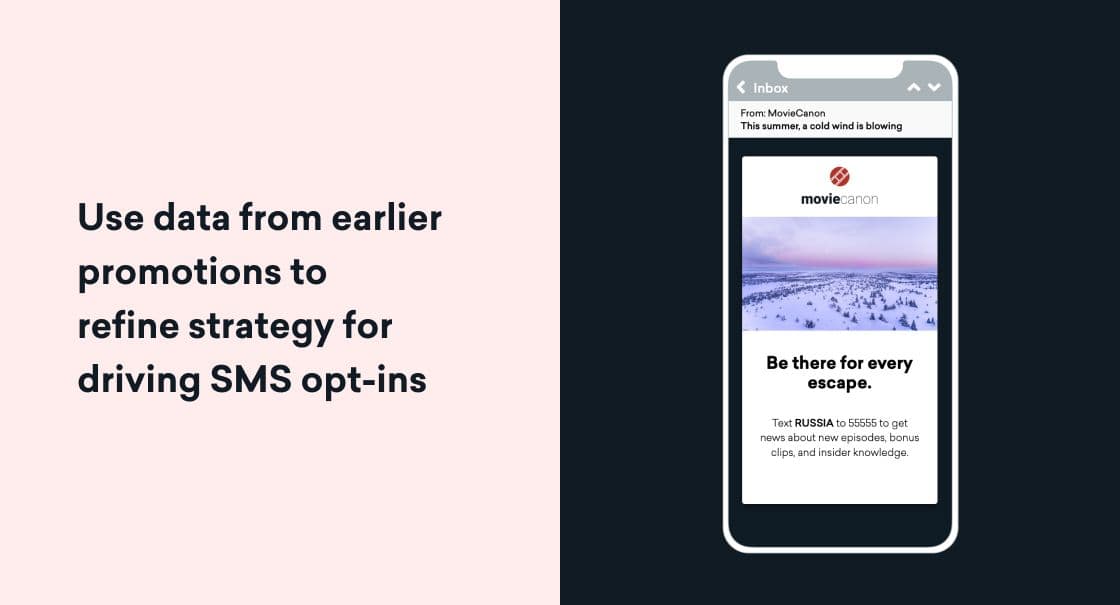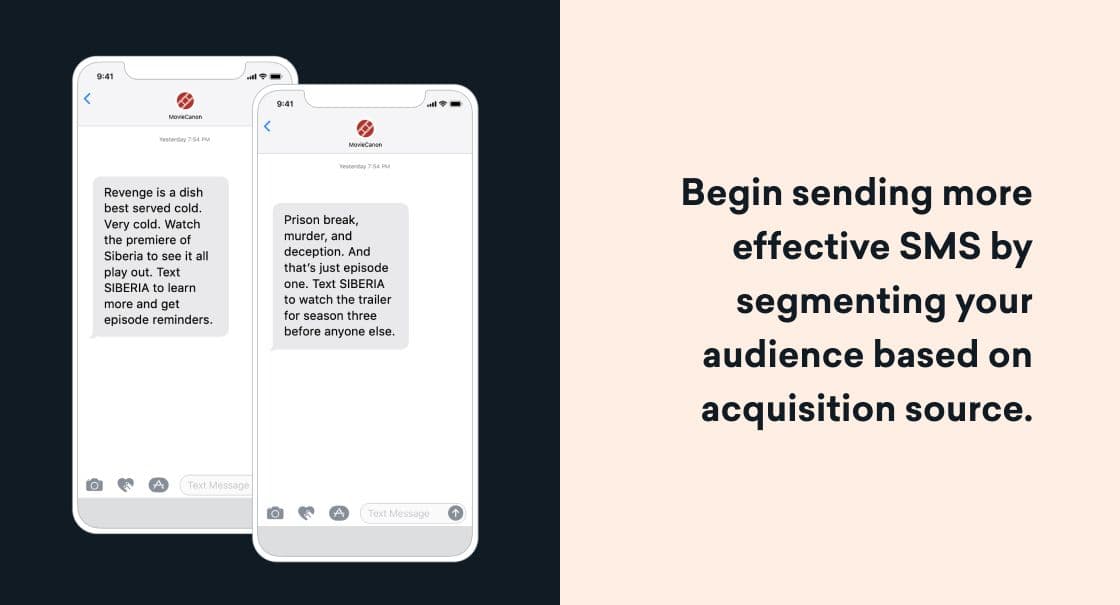The Road to SMS Marketing: How to Get Started
Published on September 02, 2020/Last edited on September 02, 2020/5 min read


Mary Kearl
WriterText message marketing, text marketing, short message service marketing, or SMS marketing—whatever you call it, texts offer an effective, and often untapped, mobile marketing channel for forward-thinking brands to reach and engage customers. Compared to email marketing and push notifications, channels that produce average open rates around 22% and between 4-7% respectively, SMS messages generate a reported 98% open rate.
For brands looking to drive mobile KPIs and get started with SMS as a channel, here are the four crucial steps you need to take to launch effective text campaigns.
Step 1: Build Your SMS Marketing List
Before you can launch your first SMS campaign, you need an audience aka a subscriber list of mobile phone numbers you can send your messages to. And these can't be just any mobile numbers: These must be contacts who have opted into receiving SMS marketing from your company.
The US and other countries require explicit opt-ins for people receiving SMS marketing, meaning that even brands with a healthy email marketing subscriber list or sizable number of mobile app downloads can't begin sending SMS messages to these individuals out of the blue. In other words, before brands can leverage SMS messages as part of a cross-channel customer engagement mix, you need to ensure you have a vetted list of textable individuals.
As with any customer acquisition strategy, it makes sense to consider a mix of organic and paid marketing channels. Depending on your brand’s target audience, your overall budget, and your customer engagement goals, you may want to consider promoting the benefits of opting into receiving SMS updates from your brand via some of the channels detailed below.

- Organic channels, such as email marketing, social media campaigns, in-app messaging, and in-browser messaging: Here the goal is to leverage your owned (organic) channels to cross-promote SMS as another way for customers to receive updates from your company. The challenge won't be to convince customers why your brand is awesome, but to simply share why your SMS campaigns are not to be missed and secure those SMS opt-ins from contacts who are otherwise already a part of your larger customer network.
- Paid channels such as digital ads, paid social ads, TV advertising, and out-of-home campaigns (OOH), such as billboard or ads on public transportation: Since these audiences may never have heard of your brand before, you'll have to do the work of explaining why both your brand and text messages are worth paying attention to.
As with any campaign, you'll want to track your stats and see which efforts are leading to sign-ups, keep track of the average cost per acquisition, leverage campaign testing to see if certain images or calls to action are performing best, and more.
Step 2: Measure Your SMS Marketing Customer Acquisition Growth by Channel
Once your paid promotional efforts lead to sign-ups and your organic efforts generate SMS opt-ins, it’s time to dig into the data you’ve started collecting in the previous step to see which channels or strategies are leading to the most opt-ins (or the lowest cost opt-ins) to optimize your acquisition efforts.

If, for instance, you’re finding that email is having more success in persuading current customers to opt in to receiving SMS, you may want to tap into this channel to send additional targeted promotional messages to customers who have not yet opted in.
Step 3: Launch Your SMS Marketing Campaigns (But Don't Forget Customer Segmentation)
As soon customers begin opting into receiving SMS campaigns from your brand, you want to be ready to deploy your first welcome campaign. This can be as simple as a warm note thanking customers for subscribing to your company's text updates that includes a special promo code or other offer. And, leveraging marketing automation, this onboarding campaign should be sent in a timely fashion (within minutes or hours of signing up, not days or weeks).

As your SMS sign-up efforts lead to a larger audience of opted-in customers, you may find that there’s an opportunity to start sending SMS campaigns that build upon the specifics of the different acquisition campaigns you are running. For instance, if your OOH campaign is using noticeably different creative than your email campaign, you can segment your audience by acquisition channel and tweak your SMS marketing campaign copy to ensure that there’s continuity between the messaging that has pulled them in and the subsequent messages you send.
Step 4: Go Beyond Single-Channel Mobile Marketing to SMS Cross-Channel Outreach
Brands who begin to utilize one single channel see customer engagement rates increase by nearly 180%. That's impressive. And companies that adopt a cross-channel strategy? They see engagement increase by up to 800%. That's transformative.
If you're ready to reach and engage customers wherever they are, we're here to help. Get our guide Brilliant Experiences, Channel by Channel to get the latest on optimizing email, mobile, web, OTT, and more for customer engagement.
Related Tags
Be Absolutely Engaging.™
Sign up for regular updates from Braze.
Related Content
View the Blog
How behavioral marketing turns data into personalized experiences

Team Braze

Are you AI-savvy enough to survive? A wake-up call for CMOs

Team Braze

What are contextual bandits? The AI behind smarter, real-time personalization
